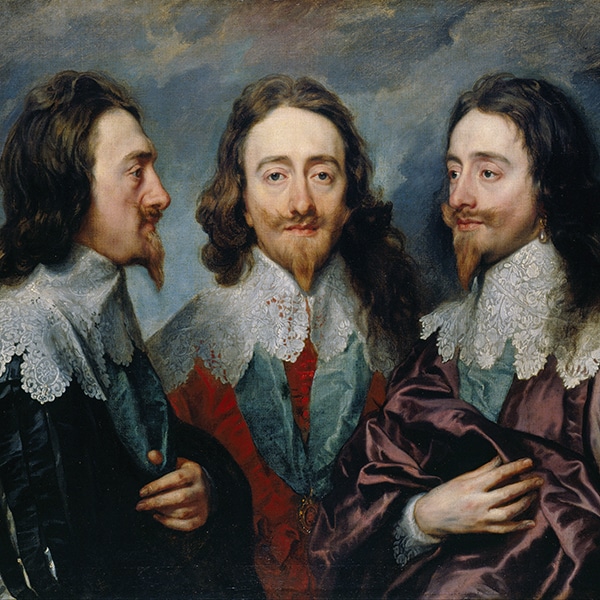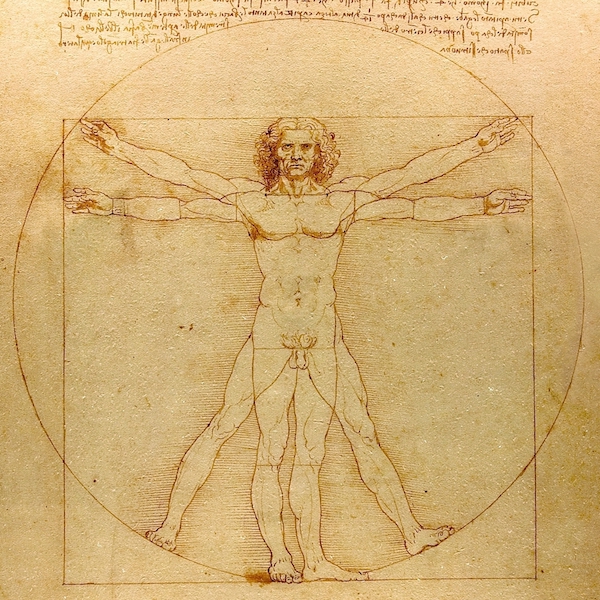
‘The Birth of Venus' (c. 1486) (Photo via Wikimedia Commons)
An early master of the Italian Renaissance, Sandro Botticelli is celebrated for his painterly contributions to the major art movement. While the artist's oeuvre features secular portraits and Biblical depictions, he is most well- known for his larger-than-life, mythological scenes—namely, The Birth of Venus.
Created in the late 15th century and exhibited in Florence's famed Uffizi Gallery since the early 1900s, the monumental painting has been admired and analyzed for centuries. Today, along with famous pieces like Leonardo da Vinci's Mona Lisa and Michelangelo's Sistine Chapel ceiling, it is regarded as a key work of the Italian Renaissance.
So, why is this painting so famous? In addition to stylistic qualities—like color and brushwork—Botticelli's approach to subject matter is what sets The Birth of Venus apart from other Renaissance depictions. Before examining these characteristics, however, it is important to understand the context of the prominent painting.
Title | The Birth of Venus |
Artist | Sandro Botticelli |
Year | c. 1484–1486 |
Medium | Tempera on canvas |
Size | 67.9 in × 109.6 in (172.5 cm × 278.9 cm) |
Location | Uffizi Galleries (Florence, Italy) |
Context
Though the exact dates of creation are not known, art historians believe that The Birth of Venus was likely painted between 1482 and 1485. At this time, the High Renaissance in Italy was less than a decade away, and Botticelli was working in Florence—the city of his birth—after a stint in Rome, where he was commissioned to create frescoes in the Sistine Chapel. Upon returning to Florence, he resumed regularly painting Roman Catholic depictions. However, he also began to dabble in new subject matter: Greek and Roman mythology.

‘Scenes from the life of Moses' -in the Sistine Chapel (c. 1480) (Photo via Wikimedia Commons)
As a result of his newfound interest in this ancient iconography, he produced two large-scale paintings: Primavera and The Birth of Venus. Though not a pair, these pieces are often viewed simultaneously due to their similar subjects, style, and scale. Additionally, both pieces are rendered in tempera paint, a traditional medium made of pigment and egg yolk. Unlike Primavera, however, which was painted on panel, The Birth of Venus is a work on canvas—the first of its kind in Tuscany.
Subject Matter
In addition to its context, The Birth of Venus is remarkable for its content, which stands out from other Renaissance scenes.
The Birth of Venus shows the recently-born Venus, the Roman goddess associated with love and beauty. Standing nude in an enlarged scallop shell, she is flanked by three figures from Classical mythology. While the intended identities of these individuals are not clear, they are widely believed to be Zephyr, the god of wind; Chloris, Zephyr's wife and a nymph associated with flowers; and Flora, the Greek goddess of spring. Together, Zephyr and Chloris push Venus toward the shore with their breath, while Flora waits to cover her with a cloak.

Detail of Venus

Detail of Zephyr and Chloris

Detail of Flora
According to the Uffizi Gallery, this scene showcases several influences, including Ovid's Metamorphoses, Agnolo Poliziano's poem, Stanzas, and Venus Pudica, a pose found in Classical art.
Similar to the contrapposto (s-shaped) stance of Michelangelo's David, the Venus Pudica is a pose characterized by asymmetry. Unlike the former, however, which is employed only to convey naturalism, the Venus Pudica bend occurs when a figure uses his or her hand to conceal their nudity. The Venus de' Medici, a Hellenistic sculpture, illustrates this.

Left: ‘The Venus de' Medici ‘ (first century BCE) (Photo: Wai Laam Lo via Wikimedia Commons)
Significance
Today, the subject matter of The Birth of Venus seems typical of the Italian Renaissance, as a Classical influence characterized the success of the period. At the time, however, it was among the first pieces showcasing this approach. In the case of The Birth of Venus, this Classical inspiration is evident in its mythological subject matter and the unprecedented prominence of the female nude.
Mythological Iconography
Like Botticelli, contemporaneous greats like Michelangelo, Leonardo da Vinci, and Raphael also incorporated Classical inspiration into their artwork. However, their pieces mostly remained rooted in Christian iconography. With The Birth of Venus, Botticelli revived the mythological interests found in Classical antiquity. Specifically, he adopted Venus (or Aphrodite, her Greek equivalent)—a particularly popular figure in ancient art, including the Venus de Milo, a famous sculpture from the first century BC—as his subject.

‘The Venus de Milo' (101 BCE) (Photo: Bradley Weber via Wikimedia Commons)
Prominence of Female Nude
While nude females regularly feature in ancient Greek painting and sculpture, they were not included in western art again until Botticelli's Birth of Venus. Following this re-introduction, however, unclothed female figures would appear in most major movements, from Art Nouveau to Post-Impressionism.
Legacy
Today, The Birth of Venus is recognized as one of the most iconic works of art. With an influence evident in everything from art-minded fashion photography to masterpiece-inspired hairstyles, its enduring role in contemporary art and culture is as prevalent as its place in the history of art.
Related Articles:
20+ Art History Accessories That Turn Everyday Objects into Masterpieces
The Story and Inspiration Behind Claude Monet’s Iconic ‘Water Lilies’ Series
How Van Gogh’s ‘The Starry Night’ Came to Be and Continues to Inspire Artists























































































